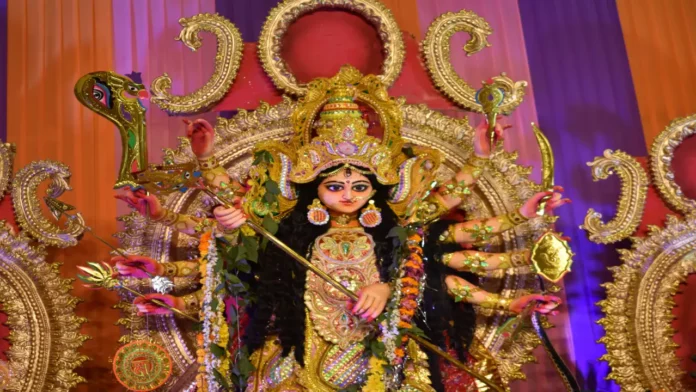Chaitra Navratri, a significant Hindu festival celebrated in the Hindu month of Chaitra, is dedicated to the worship of Goddess Durga and her various manifestations. This nine-day festival holds great spiritual and cultural significance for devotees across India and the world.
Navratri, which means “nine nights” in Sanskrit, commemorates the triumph of good over evil and the victory of Goddess Durga over the buffalo demon Mahishasura. Each day of Navratri is associated with the worship of a different form of Goddess Durga, known as the Navadurga. These nine forms of the Goddess represent various facets of feminine energy and divine power.
The first day of Chaitra Navratri is dedicated to Shailaputri, the daughter of the mountains. She is depicted riding a bull and holding a trident in her right hand and a lotus flower in her left. The second day is devoted to Brahmacharini, the ascetic form of Goddess Durga who symbolizes the pursuit of knowledge and wisdom.
On the third day, devotees worship Chandraghanta, the Goddess who wears a crescent moon on her forehead and rides a tiger. She is a symbol of bravery and courage. The fourth day is dedicated to Kushmanda, the creator of the universe, who is believed to reside in the core of the sun and provide energy to the universe.
Skandamata, the mother of Lord Kartikeya, is worshipped on the fifth day of Navratri. She is depicted holding her son Kartikeya in her lap and riding a lion. The sixth day is dedicated to Katyayani, the warrior Goddess who is worshipped for courage and strength.
On the seventh day, devotees worship Kalratri, the fiercest form of Goddess Durga who is believed to destroy all darkness and ignorance. The eighth day is dedicated to Maha Gauri, the serene and compassionate form of the Goddess.
Finally, on the ninth day, known as Navami, devotees worship Siddhidatri, the Goddess who bestows blessings and fulfillment of desires. It is also the day when devotees bid farewell to Goddess Durga and her divine energy, marking the end of the Navratri festival.
During Chaitra Navratri, devotees observe fasting, perform special prayers, and participate in cultural festivities such as Garba and Dandiya Raas. They seek the blessings of the Goddess for prosperity, happiness, and spiritual enlightenment.
Chaitra Navratri is not only a time for spiritual reflection and worship but also a period of cultural significance and community bonding. Devotees come together to organize elaborate pandals, where beautifully adorned idols of Goddess Durga are installed. These pandals become the focal points of religious and cultural activities, attracting devotees from far and wide to offer their prayers and seek blessings.
In addition to traditional rituals and prayers, Navratri is also marked by vibrant cultural performances such as folk dances, bhajans, and devotional songs dedicated to the Goddess. Communities organize Garba and Dandiya Raas events, where people gather to dance in colorful traditional attire, celebrating the triumph of good over evil.
During Chaitra Navratri, devotees also engage in acts of charity and service as a way of expressing gratitude for the blessings they have received. Many organize food donation drives, distribute prasad (holy offerings), and offer assistance to the less fortunate members of society.
Furthermore, Chaitra Navratri holds special significance for farmers and agricultural communities as it marks the beginning of the spring season and the onset of the agricultural cycle. It is believed that worshipping Goddess Durga during this time brings blessings for a bountiful harvest and prosperity in the coming year.
As the festival draws to a close on the ninth day, devotees bid farewell to Goddess Durga with great reverence and devotion. The idols of the Goddess are immersed in water bodies amidst chants of “Durga Maa ki Jai,” symbolizing the departure of the divine energy back to her celestial abode.
In essence, Chaitra Navratri is a time of spiritual renewal, cultural celebration, and community harmony. It serves as a reminder of the eternal triumph of righteousness over evil and the enduring power of faith and devotion. Through rituals, prayers, and festive gatherings, devotees reaffirm their faith in the divine and seek blessings for a prosperous and fulfilling life.

